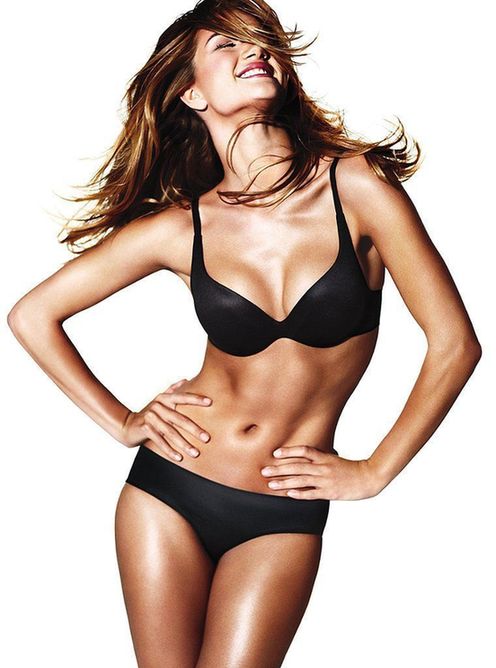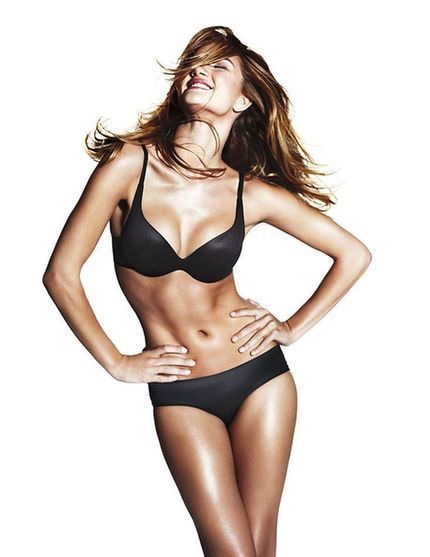 Tini Tani
Tini Tani Faustine Lara
Faustine Lara Olivia P
Olivia P Ala Konturek
Ala Konturek Kellen Hofer
Kellen Hofer
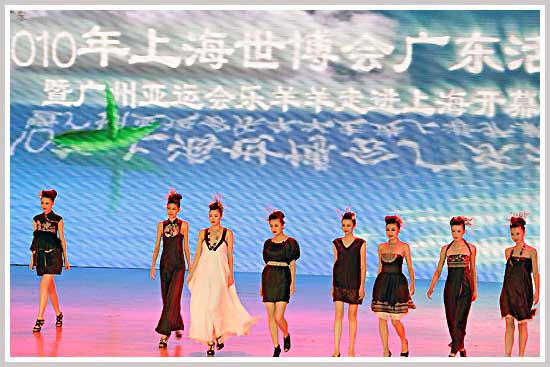
16 models displayed Tangy Collection on Baosteel Stage, which unveiled the curtain of Guangdong Week of World Expo. Tangy, the representative of Guangdong fashion industry will organize fashion shows and display the procedures of production of Liang Silk during Guangdong Week.
It is known that this unique green fabric in the world almost disappeared in the last century. Until 1994, designer Liangzi found it by accident. She treasured it very much. In the following 16 years, her brand Tangy devoted to saving and modernizing it. Now, it has become a fashionable and refined fabric, which is popular in fashion world.
Chinese men's basketball team arrived in New York to attend the first International Basketball Carnival, which was organized by Nike and USA Basketball. According to Nike brand president Charlie Denson, China market is Nike's largest foreign market, accounting 8%-9% of Nike's global market share.
Nike is now planning to explore China's second tier and third tier cities so as to be the No. 1 sports brand in China. Mr. Denson is quite confident about Nike's exploration in China. For him, Nike will not only be the first brand for basketball but also for football, running and American football in China.
In terms of Nike's exploring plan, Denson says that Nike will try its best to bring its products to China's second and third tier cities. They on one hand will broaden their sales net with their partners. On the other hand, they will maintain close relationships with Chinese youths. In Denson's opinion, China market can promote Nike's creativity and innovation. What's more, it can also improve the innovation of China's manufacturing. Nike is optimistic about dynamic China market.
If you're a T-shirts and jeans kind of a person, then here's some statistics worth knowing.
According to the Reuters poll, you should head to Hungary for a job, given that a mere twelve percent of people there dress smartly for work.
India on the other hand might be a trickier proposition, with nearly six in ten Indians wearing formal clothes in the office.
As a rule it seems Europeans are scruffier, whilst workers in South Korea, China, Turkey and Saudi Arabia all tend to make more effort.
If you want to don a pair of shorts in the office, then nearly half of all Australians asked think that's fine.
However a mere tenth of Brazilians would agree.
Russians too would disapprove, although with the heatwave Moscow is experiencing, the temptation must be great.
And what happens if you want climb the corporate ladder?
Around two thirds of people believe senior managers should be smarter than their minions.
In Sweden you're less likely to be judged on what you wear on your way to the top.
But in France you might find the corridors of power closed to you if you intend to slouch down them wearing whatever you could find that morning.
New York has reclaimed the title of the world's top fashion capital from Milan but the annual poll suggested the top five fashion cities are seeing competition from Asia and Australia.
New York had reigned as top fashion city for five years until Milan took the lead last year in the list compiled by the Global Language Monitor, a US based non-profit group that tracks the frequency of words and phrases in the media, on the Internet and throughout the blogosphere.
But with the US economy recovering, New York once again took the top spot followed by Hong Kong, London, Paris and Los Angeles.
Rounding out the top 10 were Milan, Sydney, Miami, Barcelona and Madrid.
"As the global fashion industry adjusted to the new economic reality, New York rebounded to the No. 1 spot it has now held for six of the last seven years," said Bekka Payack, the Manhattan-based fashion correspondent for the Global Language Monitor.
"This year's list of the top fashion capitals, shows the global fashion industry remaining in flux, with the relative decline of some of the previously leading players and formerly regional players emerging as significant new influences."
She said that in perhaps a harbinger of things to come, this was the first analysis where the traditional big five fashion cities -- New York, Paris, London, Milan, and Rome -- did not dominate the global fashion scene.
The biggest movers in the list were Hong Kong, Madrid and Melbourne.
The group said that the top newcomers to the expanded list included Amsterdam at number 17, Cape Town and Johannesburg at 23 and 25 respectively and Vienna at No. 27.
Following are the 10 top fashion capitals of 2010 and the change from the 2009 rankings
1. New York (up 1)
2. Hong Kong (up 5)
3. London (up 2)
4. Paris ( down 1)
5. Los Angeles (up 1)
6. Milan (down 5)
7. Sydney (up 2)
8. Miami (up 5)
9. Barcelona (up 5)
10. Madrid (up 11)
Yealotus group, the leader in design and innovation of silk products released its new creations on 7th, August. Its creations are featured wiht high technology, high-added value and fashionable design.
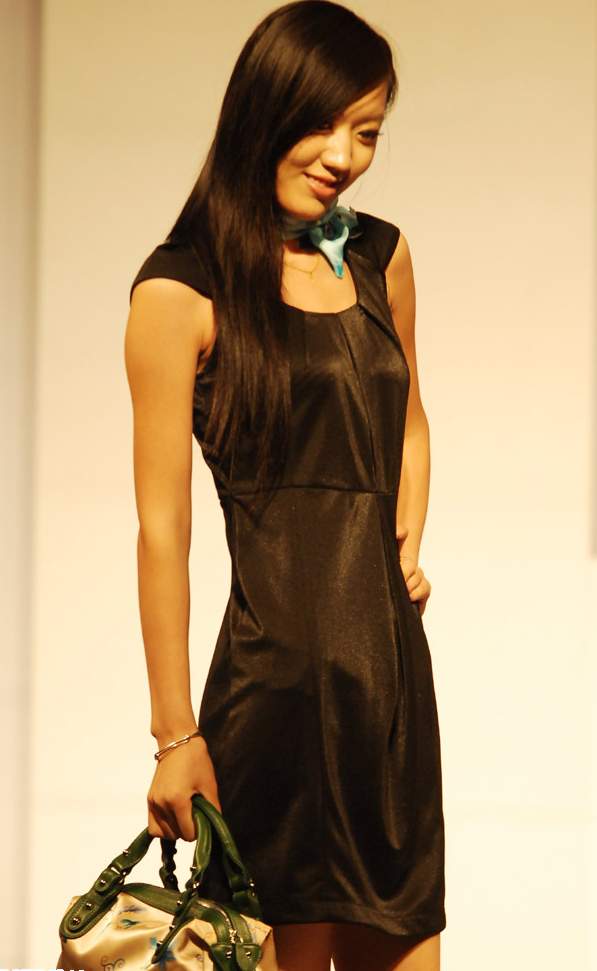
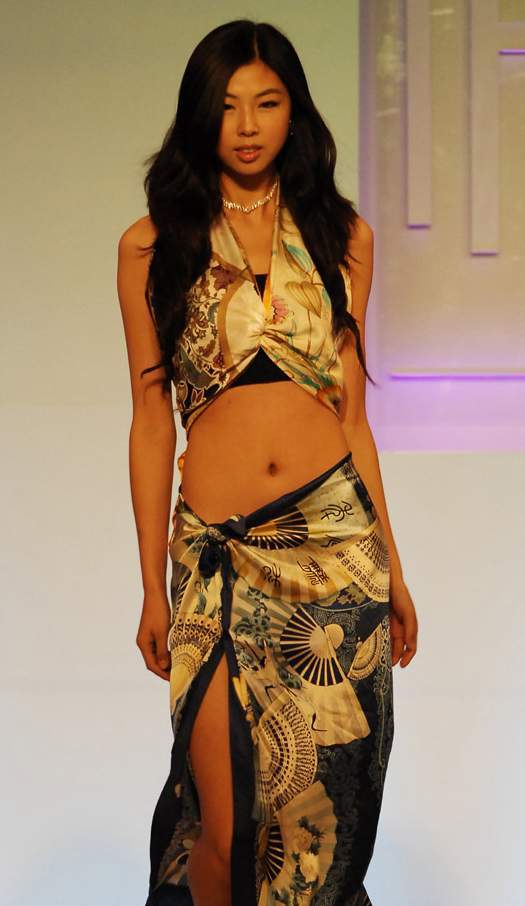
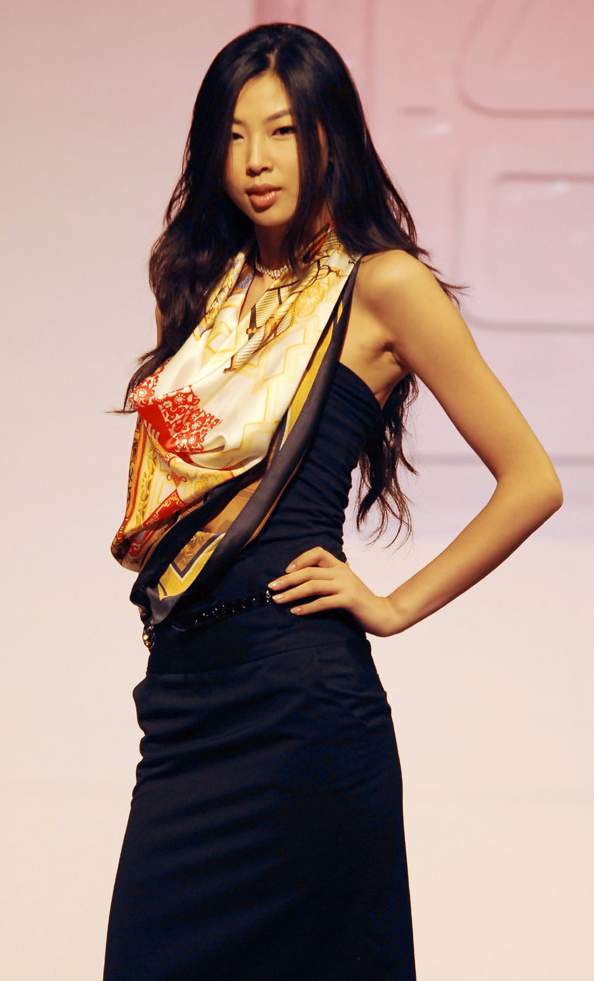
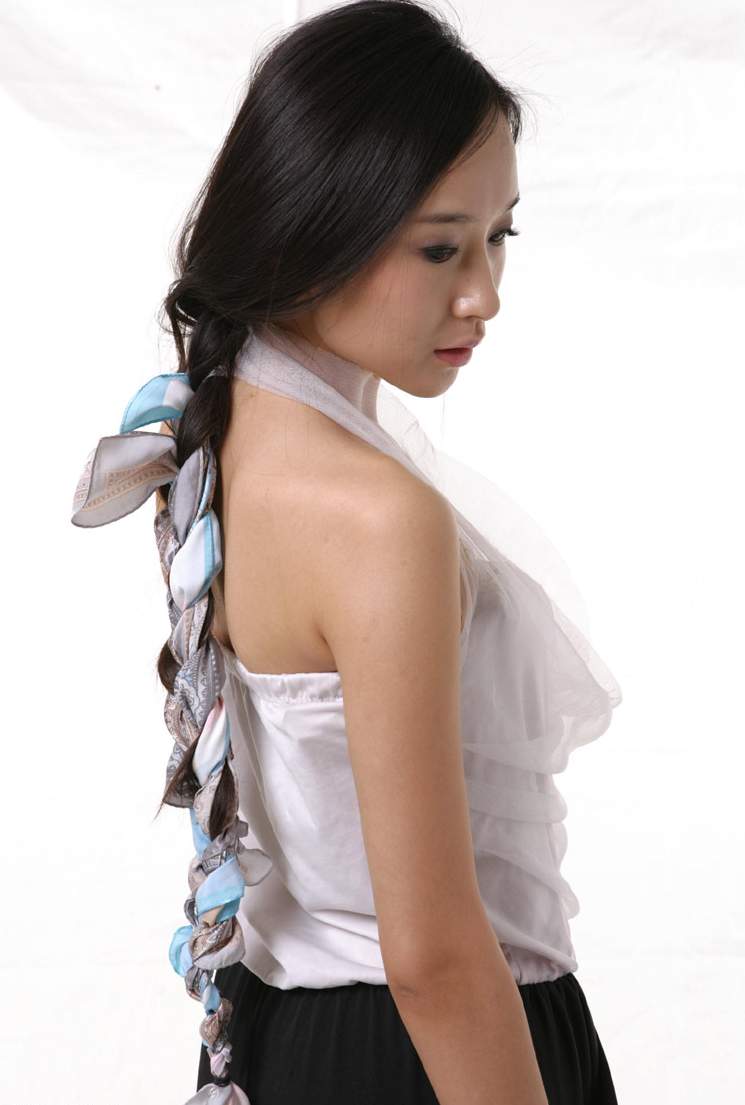
Top global luxury brands like Burberry and Coach are pouring funds into China's multi-billion dollar luxury market, wresting control of their brands from Chinese partners as they swoop back into a market set to become world No 1.
Many piled into China over the last decade, pairing with re-sellers and joint venture partners, but with so much at stake, they are severing these ties and bringing their own considerable financial and marketing muscle as well as expertise to China.
In July, Burberry said it plans to buy its network of 50 China stores in 30 cities, now operated by its franchisee, for 70 million pounds ($107.5 million), a deal seen as adding up to 20 million pounds to its 2011-12 operating profit.
French handbag maker Longchamp has decided to buy out its Chinese distributor, and has assembled a Chinese team to take care of administrative tasks. Polo Ralph Lauren has also bought back China distribution right from Dickson Concepts.
"This is definitely a trend for luxury brands to operate in China themself," said Marie Jiang, retail analyst from Pacific Epoch, a China focused advisory firm.
"It's a booming market and is in a period of high growth at least in the next 3 to 5 years," she said, adding she expects to see about 30 percent sales growth in luxury brands each year in the coming few years.
China is now the world's No 2 luxury goods market, with sales up 12 percent in 2009 to $9.6 billion, accounting for 27.5 percent of the global market, according to consultancy Bain & Co.
Nowadays Anta sports brand opens its no. 7000 retail stores in Suzhou city, Anta is second sports brand opening retail store above 7000.
Xtep also announced on its expansion plan at beginning of this year to increase 800 to 1000 stores from current 6000 that focus on second and third tier city, and 100 overseas stores or offices. Other sports brands like peak, 361 degree have their expansion plan to open flagship store in Metropolis.
What are the reasons for domestic brands to open stores in second and third tier city, some said they take strategy according to the experience of the Chinese revolution, that is to say building rural base areas, encircling the cities from the countryside and then advancing to big city and overseas markets. But actual reason is foreign brands have monopolized the markets in first tier city, domestic brands are not strong enough to complete with them, they share low market in big Chinese cities.
As a mater of fact the second and third tier city has vast potential consumption power, domestic brands dominate these markets with their competitive price, and earn huge profit from them.
It could be a nature choice for them to make expansion on metropolis and overseas markets after consolidated their bases in small city and rural areas.
With more and more domestic brand stores opened in large city, they launch the competition with global sports brands in Chinese high-end market.
As of June 30, Anta has opened 352 retail stores in Beijing and Shanghai cities, 20% of lining stores located in large cities, and Peak will increase 200 stores in Beijing, Shanghai and Shenzhen. Because they all know only outlet and brand can chang the patern of marketing.
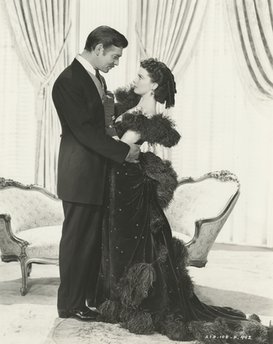
It's time to find out if fans of "Gone With the Wind" frankly give a damn about the fabulous dresses worn by Vivien Leigh in the multiple Oscar-winning Civil War drama.
The Harry Ransom Center at the University of Texas in Austin is trying to raise $30,000 to restore five of Scarlett O'Hara's now tattered gowns from the 1939 film.
The Ransom Center is planning an exhibit to mark the movie's 75th anniversary in 2014, but at the moment most of them are too fragile to go on display, according to Jill Morena, the center's collection assistant for costumes and personal effects.
"There are areas where the fabric has been worn through, fragile seams and other problems," Morena said. "These dresses have been under a lot of stress."
The Ransom Center acquired the costumes — including O'Hara's green curtain dress, green velvet gown, burgundy ball gown, blue velvet night gown and her wedding dress — in the mid-1980s as part of the collection of "Gone With the Wind" producer David O. Selznick. By then, they had already been through decades of traveling displays in theaters and had been on loan to the Metropolitan Museum of Art in New York.
"Film costumes weren't meant to last," Morena said. "They are only meant to last through the duration of filming. You won't find them to be as finished as if you bought something off the rack."
The costumes are among the most famous in Hollywood history and they played a key role in one of the most popular films ever. "Gone With the Wind" won eight Acadamy Awards.
Yet the green curtain dress — symbolic of O'Hara's determination to survive — has loose seams and needs structural reinforcement. Others have suffered abrasion and areas where the fabric is nearly worn through.
Leigh wore the curtain dress in three scenes: the jail scene in which Scarlett asks Rhett Butler, played by Clark Gable, for financial help; as she walks through the streets of Atlanta with Mammy; and when she meets Frank Kennedy.
Talking about his costume designs for the film in William Pratt's 1977 book "Scarlett Fever," designer Walter Plunkett was modest.
"I don't think it was my best work or even the biggest thing I did," Plunkett said. "But that picture, of course, will go on forever, and that green dress, because it makes a story point, is probably the most famous costume in the history of motion pictures."
Donations will be used to restore the dresses and buy protective housing and custom mannequins for the 2014 exhibit, Morena said. The Ransom Center also hopes to send the dresses out on loan.
Donations can be made on the Ransom Center website.
Singapore, 11 August 2010 – With seven more months to go, the International Furniture Fair Singapore 2011/28th ASEAN Furniture Show (IFFS/AFS 2011), Deco Asia 2011 and Hospitality Asia 2011 are filling up the exhibition halls to the brim with an eclectic mix of exhibitors from Asia and beyond. Held from 9th to 12th March 2011, this comprehensive showcase will display more than 130,000 pieces of quality furniture and furnishing products from around the globe, reinforcing the fair’s enviable reputation of being Asia’s most prestigious furniture trade show and a “must-visit” for international buyers and industry players.
The 2011 edition will feature a trilogy of shows. Alongside the IFFS/AFS 2011, the expanded Deco Asia 2011 promises a wider variety of soft furnishings and accessories for the home, while the newly launched Hospitality Asia 2011 will exhibit a whole suite of products for the hotel and contract manufacturing industry. The fair has increased its total show space to 70,000 square metres, 16 percent more compared to the last edition.
Early interest from international and local exhibitors have already snapped up 55 percent of the total exhibition space, led by Singapore exhibitors, who have increased local representation at the show by almost 15 percent as compared to last edition’s booked space. They include companies like Archipelago Exports Pte Ltd, Box Living Pte Ltd, Cellini Design Center Pte Ltd, D-Bodhi Pte Ltd, Domus Ventures Pte Ltd, Eurosa Furniture Co. (Pte) Ltd, Haleywood Industries Pte Ltd, Koda Ltd, Lifestyle Holdings Pte Ltd and Star Furniture Pte Ltd.
International brand names have also registered early participation, including marquee exhibitors such as Bayliss (Australia), Manutti BVBA (Belgium), Zhejiang Kuka Technics Sofa Manufacture Co., Ltd (China), Chakra Naga Furniture (France), Brema Marketing GmbH & Co. KG (Germany), Kenas Pacific Pte Ltd (Hong Kong), HALO (Hong Kong), Violino Limited (Hong Kong), Hin Lim Furniture Manufacturer Sdn Bhd (Malaysia) and Far East Furniture (the Philippines). Other furniture companies from the Philippines and Thailand are also expected to increase their exhibition space significantly, underscoring a stronger Asian presence at the annual show.
New exhibitors, attracted by the growing international stature of the IFFS/AFS, have also come out to seek opportunities including Maruyoshi Corporation from Japan, BJ Cabinets Enterprise Sdn Bhd, Home Upholstery Industries Sdn Bhd, White Feathers Industries (M) Sdn Bhd and Wegmans Furniture Industries Sdn Bhd from Malaysia, and Bassett Furniture International from the USA. Local outfits, Abitex Design (S) Pte Ltd, Cheng Meng Furniture Co Pte Ltd, Design Studio Furniture and Falcon Incorporation Pte Ltd have also confirmed their participation at the Hospitality Asia 2011 with much enthusiasm.
Design continues its reign at this year’s fair with more floor area designated for the D’space initiative, an over-arching umbrella introduced in 2010 which encompasses all design activities. It includes PLATFORM, the Singapore Furniture Industries Council’s launch pad for new and promising furniture designers as well as the coveted Furniture Design Award (FDA 2011), Asia’s prestigious furniture design competition.
IFFS/AFS 2010 marked a record 17,277 trade visitors from 112 countries and closed an estimated total of US$270 million in spot orders and US$2.5 billion in follow-on sales. The show organiser, IFFS Pte Ltd, expects the 2011 edition to raise the bar further with a full and comprehensive suite of exhibits totally focused on getting local and international buyers the best sourcing results on one platform, including soft furnishings & interiors as well as the hospitality & contract segment.
About International Furniture Fair Singapore Pte Ltd (IFFS Pte Ltd)
International Furniture Fair Singapore Pte Ltd (IFFS Pte Ltd) is partly owned by the Singapore Furniture Industries Council (SFIC) and MP International Pte Ltd. IFFS Pte Ltd’s primary objectives are to organise and manage furniture and furniture-related fairs, exhibitions, shows, conferences and other events worldwide. This includes the annual International Furniture Fair Singapore/ASEAN Furniture Show (IFFS/AFS), a keynote event on the furniture trade exhibition calendar.
About International Furniture Fair Singapore/ASEAN Furniture Show (IFFS/AFS)
The International Furniture Fair Singapore, held in conjunction with the ASEAN Furniture Show (IFFS/AFS) began in 1981 and has since grown to be regarded by industry experts as Asia's most prestigious furniture trade show. IFFS/AFS provides an effective marketing platform for regional as well as international companies to venture into global markets. As a testimony to the quality of the show, IFFS/AFS is the first Asian-based international furniture fair to be accepted as a member of the elite Union des Foires Internationales (UFI), a Paris-based international authority on trade fairs. In addition, it is the only furniture trade event in Singapore to be awarded the 'Approved International Fair' status by the Singapore Tourism Board. International Enterprise Singapore, Spring Singapore and the Singapore Exhibition and Convention Bureau also recognises the fair as a major event on Singapore's international exhibition calendar.
